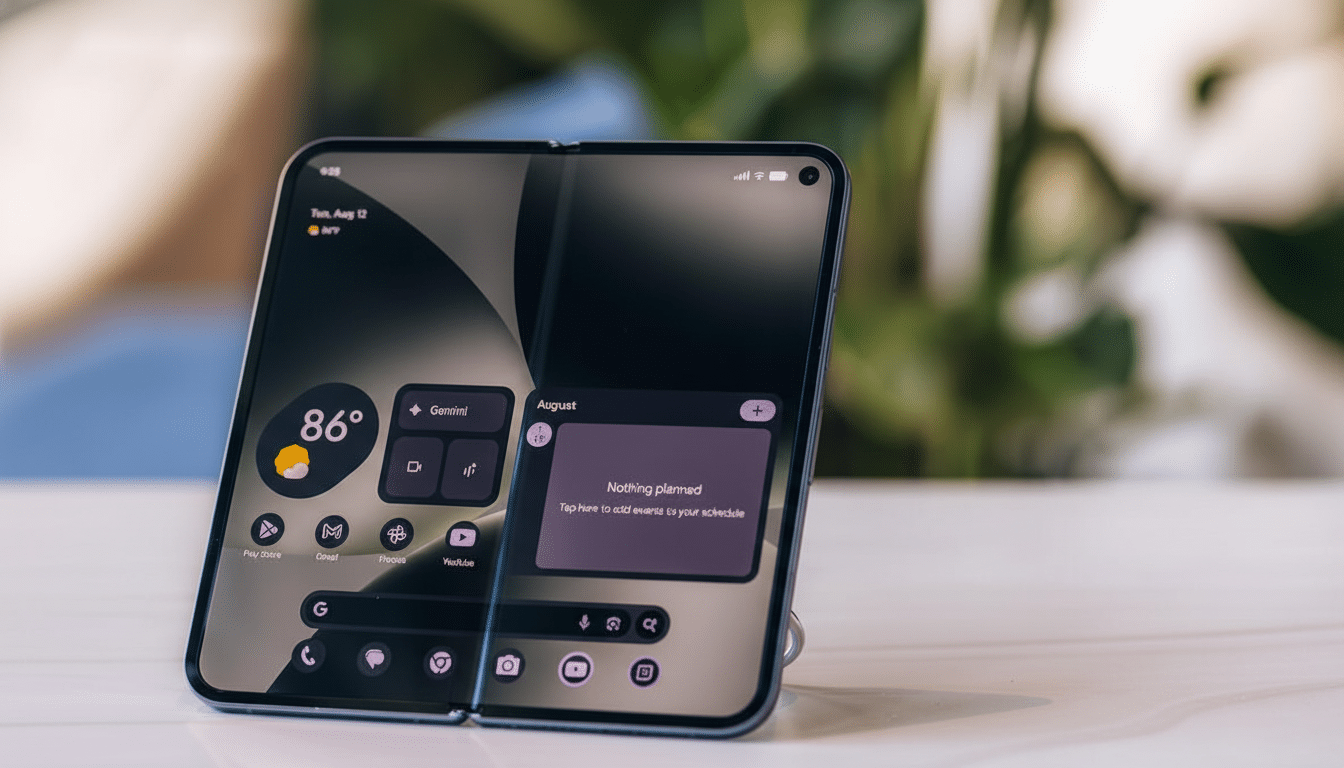The Pixel 10 Pro Fold, billed as a more durable smart folding phone, catastrophically failed during a popular hardware review, which ended when the battery exploded on camera. The incident is raising questions about structural design decisions, hinge-sealing claims, and the dangers of cramming thin pouch cells into ultra-slim devices.
What the stress test showed about the Pixel 10 Pro Fold
The device broke in the bend test video along an internal antenna line, a place of weakness in previous generations. The break in its battery seemed to have pinched the layers of the pouch cell and led to an internal short. Seconds in, the cell was venting furiously, bursting into flame — an extremely rare event even in a worst-case-for-the-content teardown. The reviewer, who has tried out hundreds of phones over the last 10 years, described it as the worst foldable he has used.
- What the stress test showed about the Pixel 10 Pro Fold
- Why the Pixel 10 Pro Fold battery ignited in testing
- IP68 claims and the fine print for foldable hinges
- A familiar weak spot returns along antenna channels
- How rivals approach durability in modern foldables
- What it means for buyers considering a foldable phone

The dust resistance of the hinge was also interrogated during that session. Despite being marketed as IP68 rated, enough fine particulate got into the mechanism and produced an audible grinding. The cover and inner panels appeared to be relatively protected from direct ingestion of debris; however, this immunity was inconsistent with how a sealed assembly should function.
Why the Pixel 10 Pro Fold battery ignited in testing
Lithium-ion pouch cells are lean and mean, but they don’t like getting compressed. An internal short can induce a fast thermal runaway from within the cell, by layers being pressed into the interior of the cell (bent severely or punctured). Safety organizations like UL and standards such as UN 38.3 specify transport and abuse tests, but in practice, a crush or fold still can defeat those protections. At the national labs, researchers have captured video showing how internal temperatures can spike past critical thresholds within seconds after a short develops.
Here, the break in an antenna line probably focused stress at a small point and buckled the battery’s separator. The momentary release of energy — the telltale flash and smoke — fits a hard short scenario much better than the slow swell or creep-like vent seen in old cells.
IP68 claims and the fine print for foldable hinges
IP68, by IEC 60529, offers dust-tightness (the “6”) and protection during continuous immersion in water (the “8”). Both metrics get trickier when it comes to foldables, as hinges bring with them tolerances, moving parts, and paths for particles. Most rigid foldables from competitors have, historically, hit IPX8 — good against water but not dust at all — precisely so they would not be overpromising around the hinge.
Those sand and subsequent hinge-noise indications in the test seem to argue for well-sealed display assemblies, but a hinge that can still bring in tiny detritus. If true, that would undercut the spirit of a “fully sealed hinge” assertion and place some pressure upon the manufacturer to explain test methods, tolerances, and which parts of the device are truly dust-tight.

A familiar weak spot returns along antenna channels
But maybe the most revealing stroke is a failure line that comes back. The previous models in the same range were rumoured to also be prone to shattering along those antenna channels. Metal frames can also include antenna cutouts and break lines to tune radio performance, but these create structural seams under torsion. If these seams run into battery voids, the risk is higher.
The reviewer also poked a secondary module under the inner display, which was confirmed to be a proximity and ambient light sensor rather than a hidden camera — a reminder that foldable stacks are tightly compressed and leave little room for errors when frames bend.
How rivals approach durability in modern foldables
Competing devices take different trade-offs. Recently, Galaxy Fold handsets have been touting IPX8 water protection and sturdy frames, as well as slashes in hinge apertures, though averse to dust ratings. OnePlus Open and its counterpart boast of strenuous cycle testing as well as a gapless hinge to prevent the ingress of particles. Claims from independent labs vary — while TÜV certifications cite in the hundreds of thousands to a million folds — but no single claim guarantees survivability under torsional abuse, like bend forces well beyond those seen in viral stress tests.
That context is important, because the foldables are coming. Global foldable shipments reached over 15 million units in 2023 and are rising further, according to Counterpoint Research. As volume has gone up, it becomes a competitive semiconductor factor to have conservative engineering of batteries and structural seams, not just another bullet on the specs sheet.
What it means for buyers considering a foldable phone
One spectacular failure isn’t indicative of all the units, but the pattern of failures around antenna lines and performance issues in the hinge is worth analyzing. At its most basic, the episode makes the case for moving antenna gaps away from battery zones, hardening frame bridges in high-stress portions of a phone, and better isolating cells from crush paths — things ruggedized phones and laptops are already designed to do.
For potential owners, practical care still matters: don’t twist when opening on uneven surfaces, keep fine grit clear of the hinge action, and consider cases that add rigidity along the spine. The message is even clearer for the manufacturer. If you’re going to say you have an IP68-rated foldable, then the hinge has to act like it. And if a known weak seam keeps making news, it’s time to relocate that weak spot — or toughen it up — before the next flagship tries to prove its bravery on camera.

